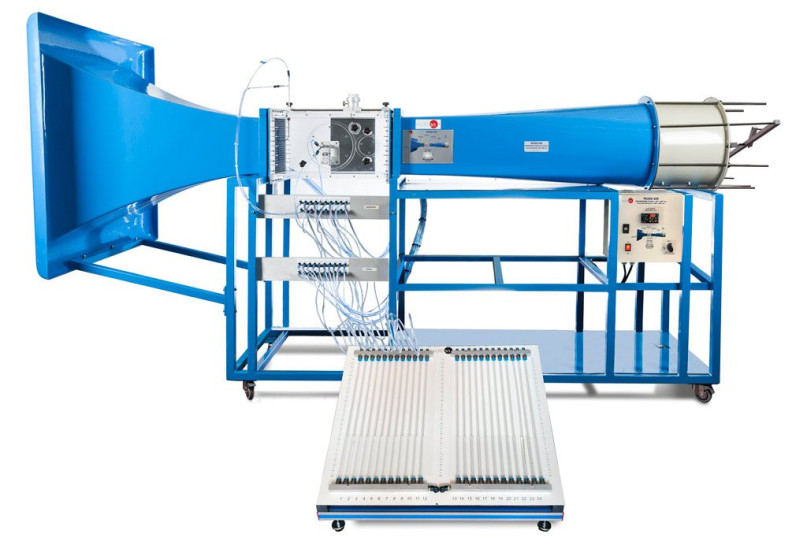La Soufflerie, 300 x 300 mm, "TA300/300", conçue par EDIBON, est une soufflerie conçue pour étudier l’aérodynamique subsonique dans un tunnel en boucle ouverte et avec un flux subsonique incompressible. L’air circule grâce à un ventilateur à vitesse variable situé du côté de la sortie du tunnel. Différents modèles et accessoires sont disponibles, permettant une étude complète de l’aérodynamique subsonique.
L'unité comprend plusieurs sections de tunnel. Dans le même ordre que le flux les traverse, ce sont : les lèvres, la partie arrière, la contraction, la zone de travail, le diffuseur et le ventilateur.
Des lèvres et une section de contre-courant sont prévues à l'entrée du tunnel pour réduire la chute de pression et l'interférence du flux. Un rapport de rétrécissement de 9,5:1 et un contour de courbe de rétrécissement bien pensé assurent un flux d'air bien développé dans la zone de travail.
La zone de travail est située en aval du rétrécissement. Elle consiste en une section à section constante, où sont montés les modèles d'essai, et les dimensions de la section transversale sont plus grandes que celles des modèles. Il est fait de résine acrylique transparente pour permettre l'observation des modèles. Ce comprend un tube de Pitot statique dans sa partie supérieure pour étudier la pression statique, la pression dynamique et la pression totale.
Un diffuseur est inclus à la sortie du tunnel pour éviter la génération de turbulences qui peuvent endommager la qualité du courant dans la zone de travail.
Un ventilateur axial, situé du côté de la sortie du tunnel, assure une plus grande uniformité du profil de vitesse dans la zone de travail. Une console électronique contient le contrôleur du ventilateur axial.
Il existe soixante entrées différentes adaptées à la mesure de la pression (le long du tunnel et dans les différents modèles). L'unité comprend un manomètre à eau avec vingt-quatre tubes pour mesurer la pression statique (TA300/MB).
Les modèles sont montés sur une trappe circulaire, et sont fixés à la zone de travail pour sceller l'ouverture. Ils sont fixés par des boutons sur la paroi latérale de la zone de travail.
 Préférences sur les cookies
Préférences sur les cookies


















